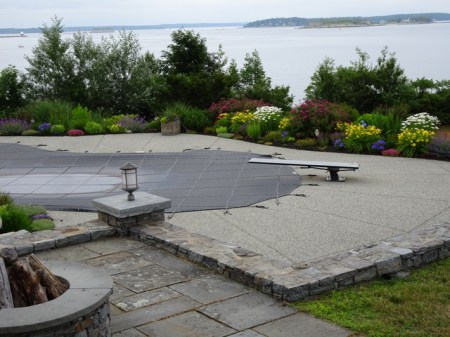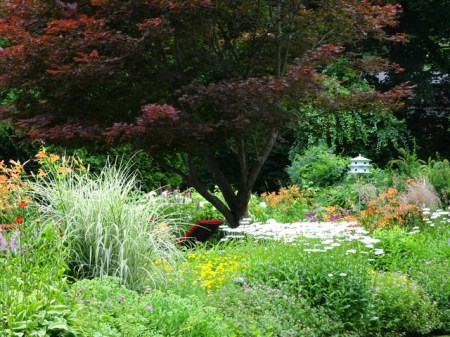 Just north of the village of Sconset, Sankaty Head Light is an iconic Nantucket sight.
Just north of the village of Sconset, Sankaty Head Light is an iconic Nantucket sight.
In mid-September, we traveled to Nantucket Island, Massachusetts, US, to attend the wedding of my godson. Like the coast of Maine, Nantucket has absolutely gorgeous gardens everywhere you look. However, the most beautiful gardens we found were in the town of Sconset (formally Siasconset) on the east coast of the island.
Nursery News: Carolyn’s Shade Gardens is a retail nursery located in Bryn Mawr, PA, specializing in showy, colorful, and unusual plants for shade. The only plants that we ship are snowdrops and miniature hostas. For catalogues and announcements of events, please send your full name, location, and phone number (for back up use only) to carolyn@carolynsshadegardens.com. Click here to get to the home page of our website for catalogues and information about our nursery and to subscribe to our blog.
.
 Sconset beach is empty in mid-September, and there was plenty of parking. It is so beautiful that we went there twice during our long weekend on Nantucket and spent hours walking the shore.
Sconset beach is empty in mid-September, and there was plenty of parking. It is so beautiful that we went there twice during our long weekend on Nantucket and spent hours walking the shore.
Sconset was settled in the 17th century as a fishing village with many of the cottages dating from the 18th and 19th century when there was a whaling station located there. In the late 1800s it started to become a destination for summer visitors, but homes were built in the style of the original fishing shacks. Today, although the historic architecture has been preserved, the “fishing shacks” sell for between $1.5 and 3 million.
.
 A view of the village of Sconset from the beach.
A view of the village of Sconset from the beach.
The little village of Sconset is overrun with tourists in the summer, but in mid-September it was empty. Here are some of the lovely gardens we found there:
.
 a path through the village “paved” with oyster shells
a path through the village “paved” with oyster shells
.
 A typical Sconset cottage featuring Nantucket style gray shingles with white trim.
A typical Sconset cottage featuring Nantucket style gray shingles with white trim.
.
 Roses on trellises adorned many roofs, and plants like the hydrangea in the photo were chosen to complement architectural features like this pink doorway.
Roses on trellises adorned many roofs, and plants like the hydrangea in the photo were chosen to complement architectural features like this pink doorway.
.
Carolyn
.
Nursery Happenings: You can sign up to receive catalogues and emails about nursery events by sending your full name, location, and phone number to carolyn@carolynsshadegardens.com. Subscribing to my blog does not sign you up to receive this information. Please indicate if you will be shopping at the nursery or are mail order only.
Carolyn’s Shade Gardens is a local retail nursery in Bryn Mawr, Pennsylvania, U.S., zone 6b/7a. The only plants that we mail order are snowdrops and miniature hostas and only within the US.
Facebook: Carolyn’s Shade Gardens has a Facebook Page where I post single photos, garden tips, and other information that doesn’t fit into a blog post. You can look at my Facebook page here or click the Like button on my right sidebar here.
Notes: Every word that appears in orange on my blog is a link that you can click for more information. If you want to return to my blog’s homepage to access the sidebar information (catalogues, previous articles, etc.) or to subscribe to my blog, just click here.



































































































 ‘Brother Stefan’, 2017 Hosta of the Year, 20″ tall and 36″ wide, near white flowers.
‘Brother Stefan’, 2017 Hosta of the Year, 20″ tall and 36″ wide, near white flowers.


































































